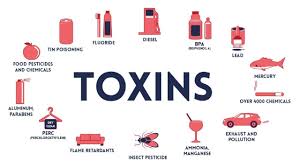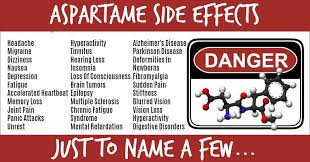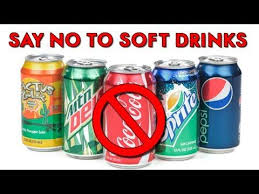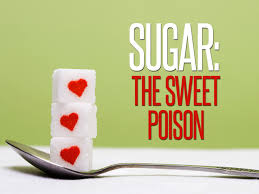Baby Soya Infant Formula My baby is lactose intolerant, so is it OK to use baby soya infant formula? This is a commonly asked question from parents that come to see me for nutritional counselling in Cyprus where I live and work. I have prepared this document in answer to this question about soy infant substitutes for other lactose-containing powdered milks. It’s still unfortunate that many paediatricians in my vicinity are blindly recommending soy infant formula without even looking at the research in order to make a more objective decision – needless to say the children are the victims, including one of my little girls, before becoming wiser to the dangers of soy infant formula. THE PITFALLS OF SOY INFANT FORMULA Soybeans are generally high in protein compared to other legumes but contain potent enzyme inhibitors that block the action of trypsin and other enzymes needed for protein digestion. In test animals, diets high in trypsin inhibitors depress growth and cause enlargement and pathological conditions of the pancreas, including cancer. SOY PROTEIN ISOLATES & CARCINOGENS Soy protein isolate, a powder extracted from soybeans, is the main ingredient in soymilk products. This is extracted through a process that involves not only high temperatures but also caustic chemicals. The alkaline soaking solution produces a carcinogen, lysinealine, and reduces the cystine content, which is already low in the soybean. Other carcinogens called nitrosamines are formed during high temperature spray drying. PHYTIC ACID & MINERAL BLOCKAGE Soybeans also contain high levels of phytic acid …
Prevention is Far Wiser than Cure The present financial bubble that has now reached bursting point with a global ‘Financial Tsunami’ predicted very soon reminds me of a similar phenomenon that is happening with people’s health all over the world. We are immersed in toxins around the globe so learn how prevention is far wiser than cure. About 40 years ago the chemical industry in their wisdom decided to dump pollutants such as PCBs into the air and water with little or no regulation. For years, the mantra of the industry was “the solution to pollution is dilution.” Mixing toxins with vast quantities of air and water was supposed to neutralise them. Many decades later, with our plagues of hermaphrodite frogs, poisoned ground water, and mysterious cancers, the mistake in that logic is plain. To add insult to injury, we now have the Japanese crisis at Fukushima’s nuclear reactors spewing radioactive Iodine-131, Cesium-135 and other radioactive heavy metals into the atmosphere and the oceans. This is not spreading across the globe slowly but surely. This is akin to the thinking of modern medicine – let’s ignore the amount of toxins that we dump in our bodies and simply look at the symptoms. The fact that most of these symptoms are related to these toxins is neither here nor there – let’s simply repress the toxins by using more toxins which are called drugs. It is no surprise that the ‘bubble’ eventually bursts many years later into degenerative diseases as we push Nature …
Soya and Health Problems in Babies In 1998, investigators reported that the daily exposure of infants to isoflavones in soy infant formula is 6 to 11 times higher on a body-weight basis than the dose that has hormonal effects in adults consuming soy foods. Circulating concentrations of isoflavones in infants fed soy-based formula were 13,000 to 22,000 times higher than plasma oestradiol concentrations in infants on cow's milk formula. Approximately 25 per cent of bottle-fed children in the US receive soy-based formula - a much higher percentage than in other parts of the Western world. Fitzpatrick estimated that an infant exclusively fed soy formula receives the oestrogenic equivalent (based on body weight) of at least five birth control pills per day. By contrast, almost no phytoestrogens have been detected in dairy-based infant formula or in human milk, even when the mother consumes soy products. THYROID PROBLEMS IN BABIES Scientists have known for years that soy-based formula can cause thyroid problems in babies. But what are the effects of soy products on the hormonal development of the infant, both male and female? Male infants undergo a "testosterone surge" during the first few months of life, when testosterone levels may be as high as those of an adult male. During this period, the infant is programmed to express male characteristics after puberty, not only in the development of his sexual organs and other masculine physical traits, but also in setting patterns in the brain characteristic of male behaviour. In monkeys, deficiency of …
Toxic Chemicals Everywhere Toxic chemicals, otherwise known as “xenobiotics” (Gk: foreign to life) which are scattered all over our planet from the North Pole to the South Pole, are being constantly researched, and the conclusion is that they are extremely toxic to humans as well as wildlife. Even though some chemicals have been taken off the market, those that remain are even more noxious than the ones already banned. Bioaccumulation in soils, water supplies and the tissues of animals and humans is a real problem which results in these chemicals lingering for many, many years even after they have being banned. DDT, for example, has been banned for more than 25 years in the Western world, yet it is still being found in the tissues of wildlife in the arctic, as well as humans in many different countries. A recent study noted that only five organochlorine compounds and mercury were found in marine mammals in the 1960's. Today over 265 organic pollutants and 50 inorganic chemicals have been found in these species.1 Recent research has focused on how chemicals affect the thyroid and pituitary systems. Some chemicals have been identified as endocrine disrupters because they can interfere with the body’s own hormones, which are secreted by the endocrine glands. It is also emerging that endocrine disrupters can have many physiological effects not directly associated with the primary system. For example, the thyroid system is well known to regulate metabolism, but it is also a crucial component in foetal brain development …
Sugar is a Poison! It is a known fact that plain water can keep you alive for quite some time. Sugar and water can kill you. “Human subjects were unable to subsist on a diet of sugar.” This incident occurred when a vessel carrying a cargo of sugar was shipwrecked in 1793. The five surviving sailors were finally rescued after being marooned for nine days. They were in a wasted condition due to starvation, having consumed nothing but sugar and rum. The eminent French physiologist F. Magendie was inspired by that incident to conduct a series of experiments with animals, the results of which he published in 1816. In the experiments, he fed dogs a diet of sugar or olive oil and water. All the dogs wasted and died.1 The shipwrecked sailors and the French physiologist's experimental dogs proved the same point. As a steady diet, sugar is worse than nothing. Plain water can keep you alive for quite some time. Sugar and water can kill you. Humans [and animals] are "unable to subsist on a diet of sugar".2 Scientific evidence in many medical journals shows that sugar can ruin your health. Do you have any of the following symptoms? Do you fall asleep after meals; have allergies, gas, and bloating, extended stomach after meals, joint pains, headaches, chronic fatigue, constipation, diarrhea, over weight, skin problems, high blood pressure, arthritis, diabetes, hypoglycaemia, osteoporosis, gallstones, kidney stones, headaches, yeast infections, and cataracts or other symptoms? These all can be signs of …
50 Harmful Effects of Genetically Modified Foods By Nathan Batalion We are confronted with what is undoubtedly the single most potent technology the world has ever known - more powerful even than atomic energy. Yet it is being released throughout our environment and deployed with superficial or no risk assessments - as if no one needs to worry an iota about its unparalleled powers to harm life as we know it - and for all future generations. Let's examine the effects of Genetically Modified Foods (GMOs) and their effects on health. Introduction Biotechnology is a vital issue that impacts all of us. Largely between 1997 and 1999, gene-modified (GM) ingredients suddenly appeared in 2/3rds of all US processed foods. This food alteration was fuelled by a single Supreme Court ruling. It allowed, for the first time, the patenting of life forms for commercialization. Since then thousands of applications for experimental GM organisms have been filed with the US Patent Office alone, and many more abroad. Furthermore an economic war broke out to own equity in firms which either have such patent rights or control the food-related organisms to which they apply. This has been the key factor behind the scenes of the largest food/agri-chemical company mergers in history. Few consumers are aware this has been going on and is continuing. Yet if you recently ate soya sauce in a Chinese restaurant, munched popcorn in a movie theatre, or indulged in an occasional candy bar - you've undoubtedly ingested this new type …
Aspartame Toxicity IS ASPARTAME O.K. DOCTOR? My patients have often asked me whether taking aspartame is OK. At the time, I thought that it was, as I had read that it was present in over 6,000 foods, and was consumed by more than 100 million people worldwide, so naturally I assumed it must be OK. Being an inquisitive mind, however, I decided to do a little background research into Aspartame. I was horrified with what I discovered, and would like to share this with you so that you can be a little more informed, and share this wisdom with your patients, loved ones and family. Aspartame is the technical name for the brand names, NutraSweet, Equal, Spoonful, and Equal-Measure. Aspartame was discovered by accident in 1965, when James Schlatter, a chemist of G.D. Searle Company was testing an anti-ulcer drug. Aspartame was approved for dry goods in 1981 and for carbonated beverages in 1983. SYMPTOMS OF ASPARTAME TOXICITY Aspartame is, by far, the most dangerous substance on the market that is added to foods. Aspartame accounts for over 75 percent of the adverse reactions to food additives reported to the US Food and Drug Administration (FDA). Many of these reactions are very serious including seizures and death as disclosed in a February 1994 Department of Health and Human Services report. A few of the 92 different documented symptoms listed in the report as being caused by aspartame include: Headaches/migraines, dizziness, seizures, nausea, numbness, muscle spasms, weight gain, rashes, depression, fatigue, …
Dangers of Soft Drinks The addict feels low. His body needs a boost. He reaches into his pocket and finds a dollar bill. He slides it into the machine and a can rolls out. He opens the can and guzzles. He feels his energy return. His fix will last a couple of hours, enough to keep him alert for the rest of the morning. The addict is twelve years old and his drug is a soft drink, purchased from a vending machine in his school. This addict and thousands like him will attend special classes, sponsored by his school, to warn him about the dangers of drugs, tobacco and alcohol. But no one will tell him about America's other drinking problem. According to the National Soft Drink Association (NSDA), consumption of soft drinks is now over 600 12‑ounce servings (12 oz.) per person per year. Since 1978, soda consumption in the US has tripled for boys and doubled for girls. Young males age 12‑29 are the biggest consumers at over 160 gallons per year‑that's almost 2 quarts per day. At these levels, the calories from soft drinks contribute as much as 10 percent of the total daily caloric intake for a growing boy. TARGETING THE YOUNG Huge increases in soft drink consumption have not happened by chance‑they are due to intense marketing efforts by soft drink corporations. Coca Cola, for example, has set the goal of raising consumption of its products in the US by at least 25 percent per …
Is Sugar a Food or a Poison It is a known fact that plain water can keep you alive for quite some time. Sugar and water can kill you. “Human subjects were unable to subsist on a diet of sugar.” This incident occurred when a vessel carrying a cargo of sugar was shipwrecked in 1793. The five surviving sailors were finally rescued after being marooned for nine days. They were in a wasted condition due to starvation, having consumed nothing but sugar and rum. The eminent French physiologist F. Magendie was inspired by that incident to conduct a series of experiments with animals, the results of which he published in 1816. In the experiments, he fed dogs a diet of sugar or olive oil and water. All the dogs wasted and died.1 The shipwrecked sailors and the French physiologist's experimental dogs proved the same point. As a steady diet, sugar is worse than nothing. Plain water can keep you alive for quite some time. Sugar and water can kill you. Humans [and animals] are "unable to subsist on a diet of sugar".2 Scientific evidence in many medical journals shows that sugar can ruin your health. Do you have any of the following symptoms? Do you fall asleep after meals; have allergies, gas, and bloating, extended stomach after meals, joint pains, headaches, chronic fatigue, constipation, diarrhea, over weight, skin problems, high blood pressure, arthritis, diabetes, hypoglycaemia, osteoporosis, gallstones, kidney stones, headaches, yeast infections, and cataracts or other symptoms? These all can …












